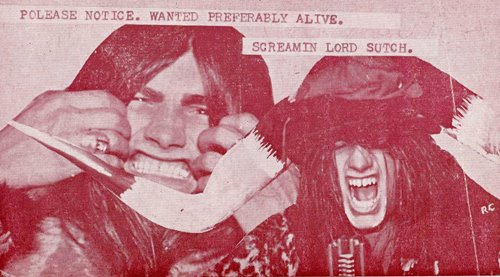
The exact circumstances of Screaming Lord Sutch’s debut are difficult to pinpoint. Dave Sutch didn’t become Screaming Lord Sutch in a day and at the beginning he hadn’t long hair.
In late 1950s, Dave Sutch lived in South Harrow, Middlesex. Originally he had an Elvis Presley look-alike apparel and hopped onto his newly acquired second-hand BSA Bantum 125cc motorbike*, he used to head to Coffee Bars such as Ace Cafe on North Circular Road and the Cannibal Pot Coffee Bar on Harrow Road.
*It seems that it would be legend: David Sutch would never had a motorbike in those days but just a Vesper scooter that had to be push started.
Those places became his favourite haunts.
There he met an acquaintance called 'Big Ginger Bill' who persuaded him to buy his window cleaning round for £15.
Now as self employed and part-time window cleaner but outlandish full-time layabout, he was free to develop his desire to stardom.
“The work gave me the freedom to be myself, let my hair grow long and wear whatever I liked as well as practise songs as I went on my rounds. All the money I earned I kept. I was on my way”.
“I was the first of the longhairs... I had grown my locks to 18 inches long and turned myself into a freak years before the hippies came along”.
There are variations on the derivation of Screaming Lord Sutch’s title.
According to Pete Newman, sax player in one of the very first line ups of the Savages, “Sutch turned up at rehearsal with a top hat and I said, “Hey, Dave, you look like a lord”.”
Although Dave Sutch would apparently use the top hat for something else as Vic Clark, guitarist with him, recalls:
" In 1959/60 men’s hair was generally kept short. So it was really extreme to have long hair. He would pull it up over his head and wore a hat during the day. No-one would be seen in public with hair like that in those days. When he went on stage David Sutch kept his hair under his Top hat and during a song the hat would be thrown off, his hair would fall down and this created quite an impact. Girls would scream from sheer fright."
contact: tomusicstorytellers@gmail.com





